Text
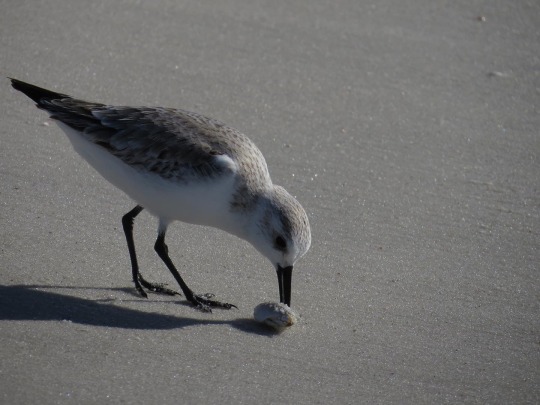


a few pictures i snapped of some sanderlings (calidris alba) on a beach in naples, florida. i was lucky enough to catch them hunting for food! the crustaceans that they're eating are atlantic mole crabs (emerita talpoida).
sanderlings nest exclusively in the high arctic canadian islands, but spend their falls and winters on sandy beaches all around the world. some populations live as far north as southern alaska, nova scotia and newfoundland, while others travel much farther south to south america. though their preferred diet consists of marine invertebrates such as small crabs, mollusks, and amphipods, they may also feed on small flying insects or plants such as grass seeds or algae.
sanderlings are primarily monogamous, but the mating system may differ from year to year. monogamous sanderling pairs will stick together no matter where they are (love wins!). during both migration and wintering periods, sanderlings may form flocks with other small shorebirds like willets and sandpipers and they'll roost in massive flocks of thousands of birds at a time!
x
62 notes
·
View notes
Photo

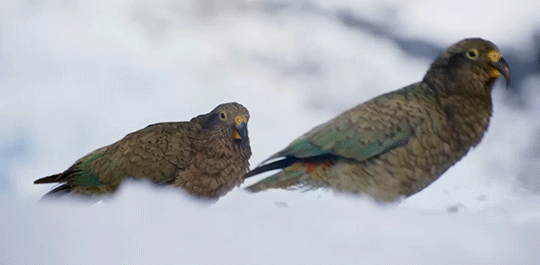
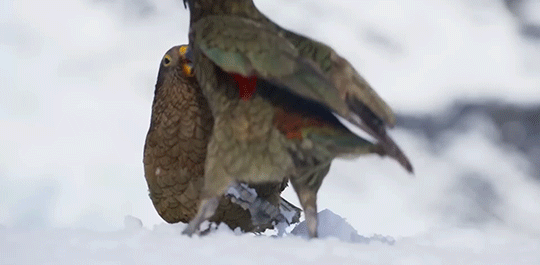


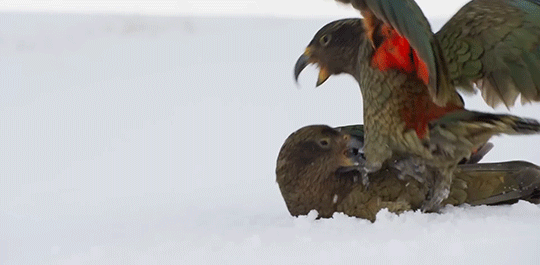

Playtime for young kea birds! There’s a benefit to this apparently carefree behavior. It helps establish long-lasting relationships between the youngsters and even diffuses tension.
David Attenborough | BBC Earth
11K notes
·
View notes
Text
📌 intro + mobile navigation 📌
hi there! welcome to my wildlife biology sideblog! i make posts about cool animals and hopefully you learn something while you're here!
more about me
resources
tag list
1 note
·
View note
Text
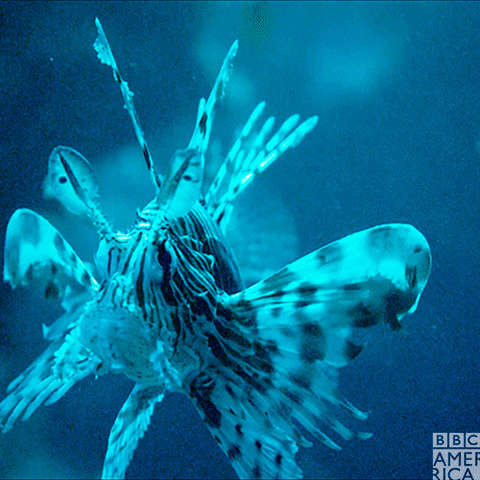
lionfish (genus pterois): a danger to atlantic coral reefs
lionfish are very popular aquarium fish and are easily recognizable by their large, venomous spines, fan-like fins and distinct colouration. they are native to the southern pacific and indian oceans.
lionfish are invasive in southeastern US and caribbean coastal waters. sightings began in southern florida in 1985 and they were documented as established in the early 2000s. their diet consists of many ecologically important species of fish, such as algae-eating parrotfish that prevent seaweed from overtaking coral reefs. the lionfish population in the US continues to increase due to a lack of natural predators and the fact that they reproduce year-round, with females laying around 2 million eggs per year (or about 10,000-30,000 eggs every four days). they also compete for food against snappers and groupers, who are already struggling against overfishing.
one way to help control the invasive lionfish population is to eat them. lionfish are 100% safe for human consumption, as the only venomous part of the fish is the spines themselves. support markets that provide lionfish, or you could even go lionfish hunting yourself! lionfish is one of the best options for food in the US right now, since they're harming the ecosystem and there's an over abundance of them. this is a rare case where we want to overfish this species to extinction (at least in the US).
sources:
X / X
#zoology#actinopterygii#conservation#invasive species#lionfish#marine biology#ichthyology#pterois#fish#biology#osteichthyes
71 notes
·
View notes
Photo
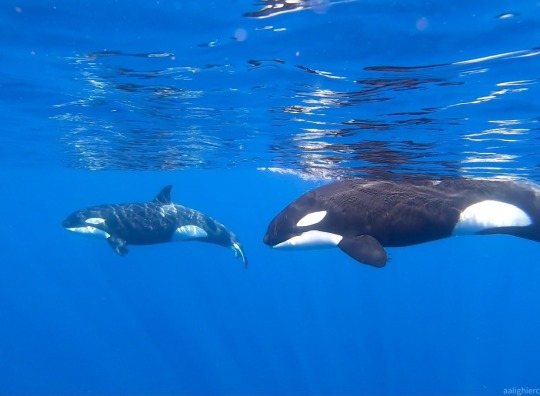
Orca (Orcinus orca)
Family: Marine Dolphin Family (Delphinidae)
IUCN Conservation Status: Data Deficient
Found in open oceans worldwide from the tropics to the poles, the Orca (also known as the Killer Whale, a mistranslation of an early Spanish name for this species, “asesina de ballenas”, meaning “whale killer”) is the largest living species of dolphin, and one of the most extensively studied of all cetaceans. Like most cetaceans Orcas live in complex social groups known as pods, but the makeup of these pods is unlike that of any other mammal in that individuals of both sexes typically remain with their mothers for their entire lives: each pod is led by a dominant female (known as a matriarch) who guides the pod in finding food, and upon her death a matriarch will be succeeded by one of her daughters. All of the males in a pod (which can be distinguished from females due to their longer dorsal fin) will be a son of one of the females within it, and while they may temporarily separate from their birth pod to mate with females from other pods they will almost always return afterwards. Different populations of Orcas differ greatly in the strategies they use to hunt and the vocalizations they use to communicate with one another, with some researchers having likened these differences to the variety of languages and cultures seen in humans. Owing to their intelligence, large size and cooperative hunting strategies, Orcas are tertiary consumers (apex predators) in every ecosystem they appear in and have been known to prey on animals as large as Blue Whales and other tertiary consumers such as Great White Sharks (although smaller prey such as sea turtles, smaller dolphins, seabirds, pinnipeds and a range of fish species are more typical prey.)
—————————————————————————–
Animal Advent Calendar - Day 2
Image Source: https://www.inaturalist.org/taxa/41521-Orcinus-orca
115 notes
·
View notes
Photo
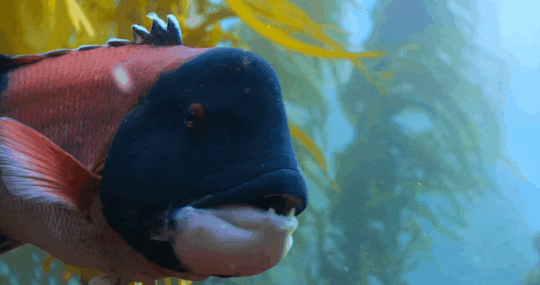
california sheephead (semicossyphus pulcher)
one of the largest members of the wrasse family, the california sheephead is a vital part of kelp forest ecosystems. they prey on shelled creatures, which includes sea urchins, who are kelp grazers. their large teeth allow them to crush through the shells of their prey. they are protogynous fish and often travel in a harem - with one dominant male leading a group of females.
this species is listed as vulnerable on the IUCN red list.
gif creds: our planet (2019)
#zoology#biology#marine biology#ichthyology#osteichthyes#actinopterygii#wrasse#labriformes#labridae#fish#vulnerable species#our planet#california sheephead
197 notes
·
View notes
Text



pictures of a japanese sea nettle (chrysaora pacifica) i took at the london sea life aquarium. they are carnivorous jellyfish, with their diet consisting of other jellyfish, anchovy eggs, zooplankton and copepods. their sting causes skin irritation and feels like a burning sensation and is considered mild.
this species of the genus chrysaora is often confused with their larger cousins, the northern sea nettle (chrysaora melanaster). as such, some specimen in public aquariums are often mis-labeled as c. melanaster.
142 notes
·
View notes
Photo
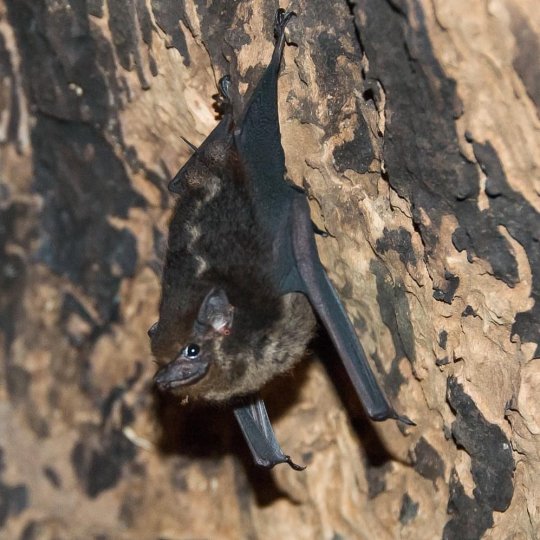
What’s the purpose of the sacs of the lesser sac-winged bat (Saccopteryx leptura)?🦇
The sacs on its wings are scent glands, which are used to mark territory and help individuals identify others of its own species! Studies have shown that females recognize and prefer scents that come from a male of the same species over the scent of a male from a closely related species. The winged mammal lives in forests in parts of Central and South America, where it awakens from its roost during the last hours of the day and remains active into the night, when it looks for moths and other small insects to munch on.
Photo: David Schenfeld, CC BY-NC-ND 2.0, flickr
#AnimalFacts #bats #lessersacwingedbat #mammals #mammology #dyk #nature
https://www.instagram.com/p/CgLASxjr95y/?igshid=NGJjMDIxMWI=
225 notes
·
View notes
Photo


images of a smallmouth bass (micropterus dolomieu) my dad caught on a lake in new york state that connects to lake champlain. these fish are an invasive species throughout much of the US and southern canada.
smallmouth and largemouth bass both belong to the genus micropterus, and it can be easy to confuse the two at times. the key identifying factors that separate the smallmouth bass and the largemouth bass are their dorsal fins. smallmouth bass have joined dorsal fins that appear as one, while largemouth bass have a clearer separation between their dorsal fins.
smallmouth bass can also vary heavily in colour depending on their size and habitat. when living in clearer water, their markings are much more pronounced as opposed to living in cloudy water.
67 notes
·
View notes
Text
A collection of mud/mangrove lobster (Thalassina anomala) fossils found at the beach near Darwin, Australia. This species still exists today, digging deep burrows into mud with a single entrance. Storms sometimes bury and suffocate them, and they are extremely common fossils. The mineral-rich water eventually forms nodules around them and they become very awkwardly shaped beach pebbles. This was found in less than 2 hours in a popular area.
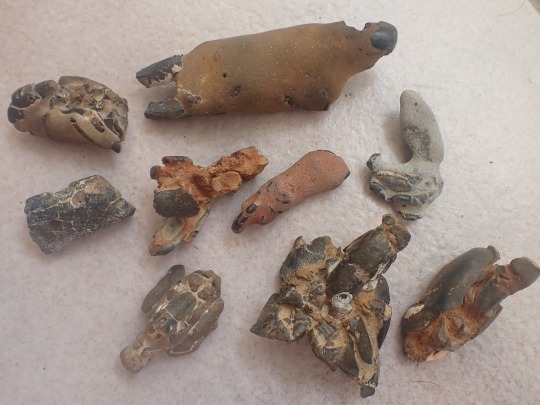
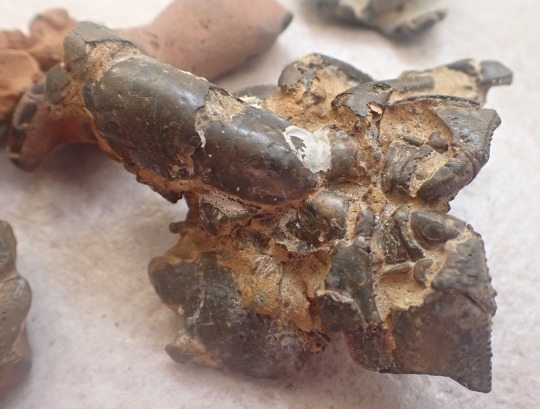
13 notes
·
View notes
Text
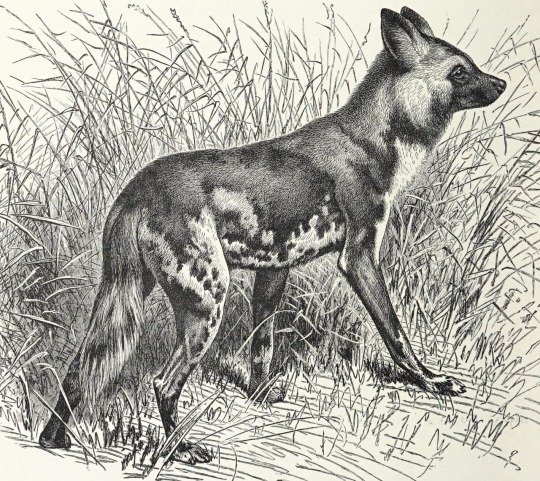
Cape hunting dog. The royal natural history - 1893 - via Internet Archive
278 notes
·
View notes
Text

a ruby-throated hummingbird (archilochus colubris) i spotted around my cottage a few weeks ago. they migrate to mexico, florida and central america for the winter and spend their summers in eastern north america for breeding season.
hummingbirds play a very important role in nature as pollinators! some plants have even adapted specifically for pollination from hummingbirds. they are also extremely beneficial for farms, as they eat many species of insects like aphids, mosquitoes, ants and small beetles.
as beautiful as they are, you shouldn't have a hummingbird feeder in your backyard, as it will attract large numbers who will begin depending on the feeder. it can also lead to the spread of disease, as any bacteria in the feeder will affect the birds as well. if you want to attract hummingbirds to your backyard, opt for planting flowers they like instead, as it's better for them and their environment.
#hummingbirds#aves#trochilidae#ruby throated hummingbird#birds#zoology#biology#ornithology#archilochus colubris
0 notes
Text

caught this northern green frog (lithobates clamitans melanota) mid-croak in the turtle pond at my local zoo! there were dozens of em gathered in the pond. highly recommend listening to audio of them croaking bc they sound kinda funny hehe
5 notes
·
View notes
Text



pictures of the river otters (lontra canadensis) at my local zoo playing together 🦦
something interesting about these guys: river otters have been observed to have an incredibly diverse diet which includes mostly fish, but also freshwater clams, amphibians like frogs and salamanders, snails and even small turtles! there have also been occasional reports of them eating small mammals like mice and squirrels and small birds.
6 notes
·
View notes
Text
not 100% sure what im gonna post here just yet but hi i like animals
0 notes